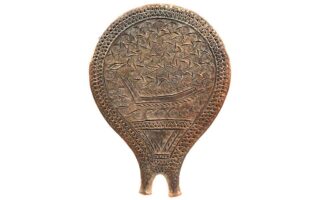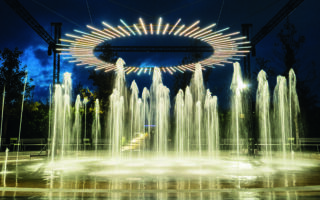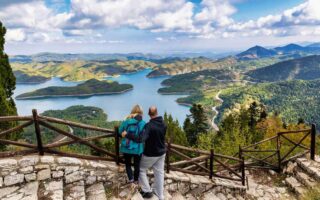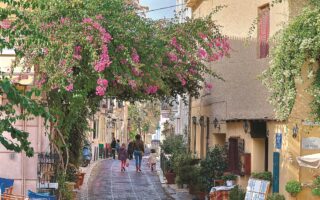Aigai: Α fresh look into ancient Macedonia
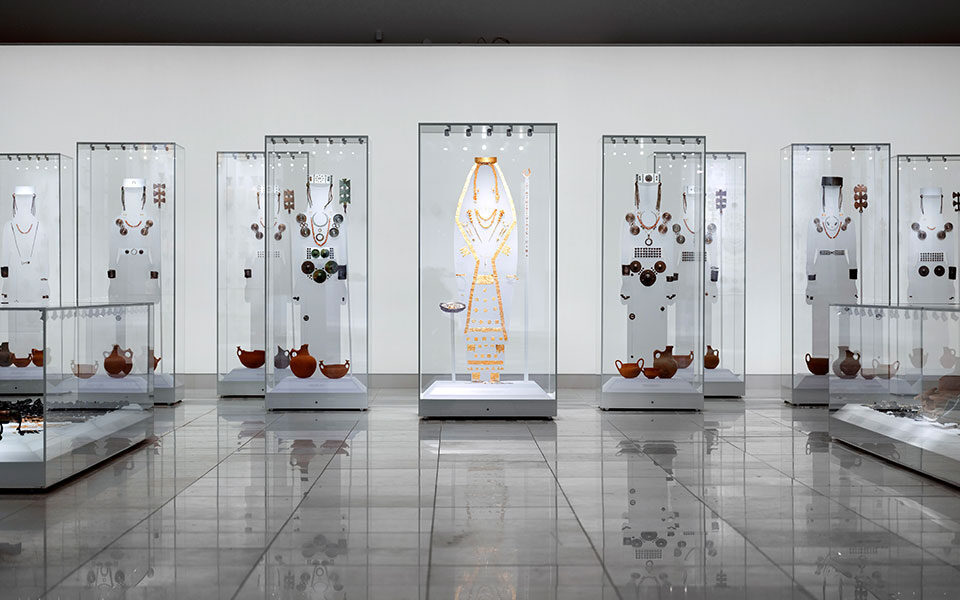
A new portal into Macedonia’s ancient past was recently opened at the village of Vergina, in Thessaloniki’s southwestern countryside, where life nowadays is anything but sedate and pastoral. Here was Aigai, the venerated spot where Macedonian kings – among them Philip II and his bold son Alexander III – settled and ruled over an expanding kingdom-turned-empire. Although Aigai’s name in ancient Greek means “Goats,” a reflection of its once-bucolic setting, this royal seat, later augmented and superseded by Pella, was a dynamic center of power and activity, just as it has become again today.
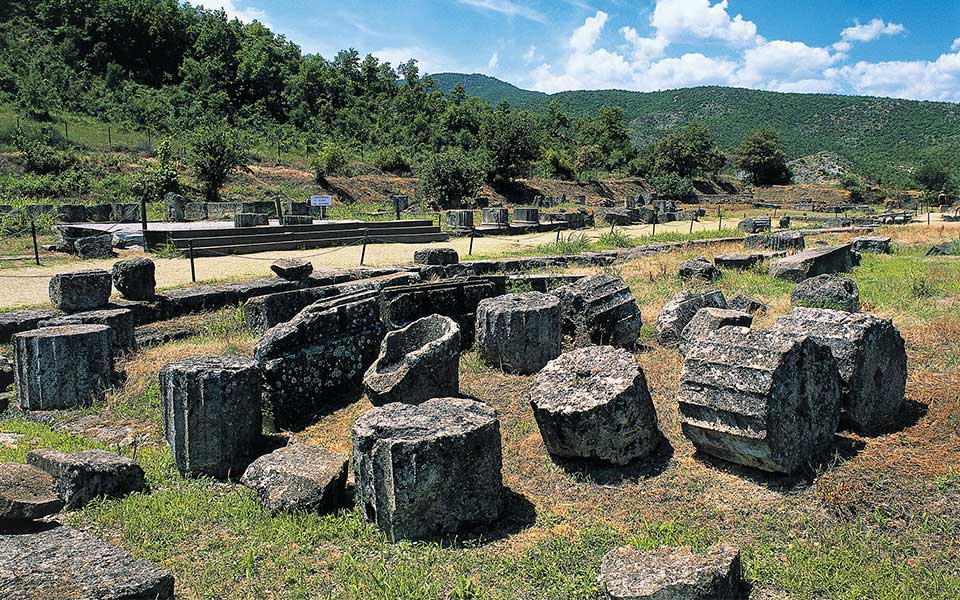
Remains of the newly re-investigated and reconstructed royal palace at Aigai. [Konstantinos Tsakalidis]
Alexander’s ‘Oikoumene’
Now the force resides in the compelling cultural heritage of the Macedonian royals, especially of Alexander the Great, whose far-reaching achievements left their mark on an enormous geographical domain – stretching from the Greek mainland to Asia Minor, the Levant, and beyond into the Middle East and India. Following Alexander’s demise in 323 BC, his empire became the “Oikoumene” – the all-embracing, multicultural, polylingual, commercially “global” complex of administratively sophisticated kingdoms we know today as the Hellenistic World.
To celebrate Macedonia’s royal heritage and better elucidate Aigai’s past way of life, a spacious new museum was unveiled at Vergina on 18 December 2022: the Polycentric Museum of Aigai (PMA). Drawing on the ancient site’s broad topographical scope and archaeological richness, the PMA combines well-known treasures with previously unseen or new discoveries. In 2023, its innovatively designed exhibition center will also become home to an internet-based digital museum entitled “Alexander the Great, from Aigai to Oikoumene,” which is sure to extend Aigai’s reach once again into distant corners of the “kosmos.”
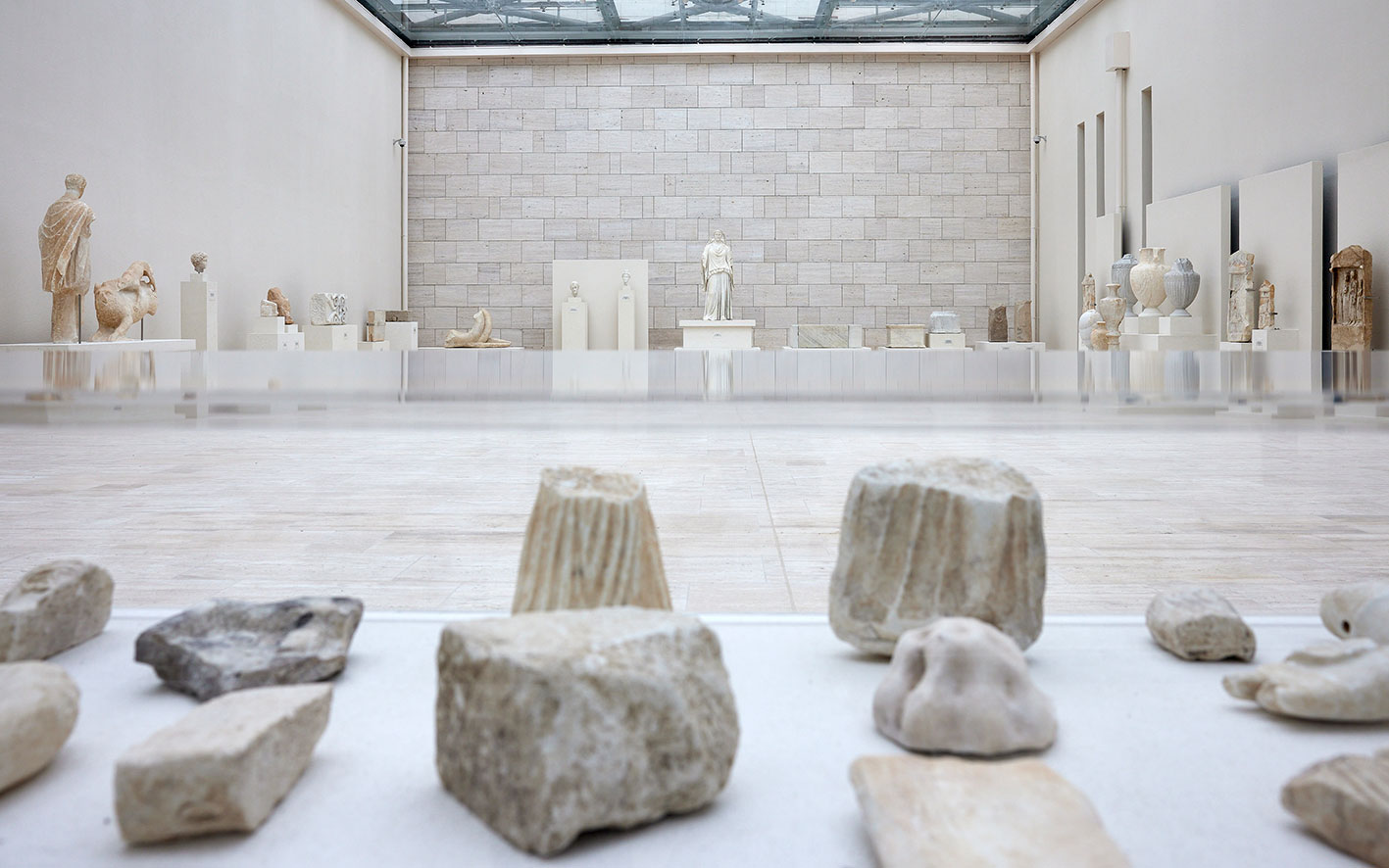
Beneath Macedonia’s hills
In the heartland of ancient Macedonia, distinctive hills regularly dot the landscape, with more than 500 such tumuli in the Vergina/Palatitsia area alone. These were the burial spots of affluent Macedonian elites and respected warriors. In 1976, as archaeologist Manolis Andronikos began excavating Vergina’s Great Tumulus, he unearthed a barrel-vaulted burial complex (Tomb II) with an elegant Doric façade. Behind tall stone doors, Andronikos discovered two unlooted rooms filled with gold, silver, ivory, bronze, and iron objects for personal, ceremonial, or utilitarian purposes. Also found were traces of richly decorated textiles, burned sacrificial foodstuffs, and especially a small golden chest (larnax) containing the cremated remains of Philip II. A second burial in the antechamber is said to belong to the king’s sixth wife, Thracian Meda.
… Near the Gardens of Midas
Although controversy lingers regarding the identities of the deceased in Tomb II, the location of ancient Aigai seems clear. Herodotus (5th c. BC) reports that Perdiccas I, Macedonia’s founder, left Argos about 700 BC and eventually settled “near the Gardens of Midas,” in the “shadow of the mountain called Vermion” – not far from the confluence of the Aliakmon and Lydias (now Loudias) rivers and present-day Veria. Archaeological evidence shows Aigai was already populated by the 10th c. BC, becoming the Argead/Temenid dynasty’s leading city in the mid-7th c. BC. Recent re-investigation of Aigai’s palace by archaeologist Angeliki Kottaridi, director of the Ephorate of Antiquities of Imathia, has shown the palace was constructed under Philip II.
As Pella, Alexander’s birthplace, similarly developed during the 4th c. BC, Aigai became a seasonal headquarters, its palace a venue for political, ceremonial, and philosophical gatherings. Together with nearby Mieza, the so-called School of Aristotle, this was the verdant Macedonian homeland from which Alexander emerged, eventually taking up the imperial reins after his father’s assassination (336 BC) in the theater at Aigai. Later, under Cassander, Thessaloniki was founded (315 BC); a new Antipatrid dynasty was launched; Aigai appears to have become more of a historical monument to Macedonia’s regal past, eventually largely disappearing beneath a severe landslide in the 1st c. AD.
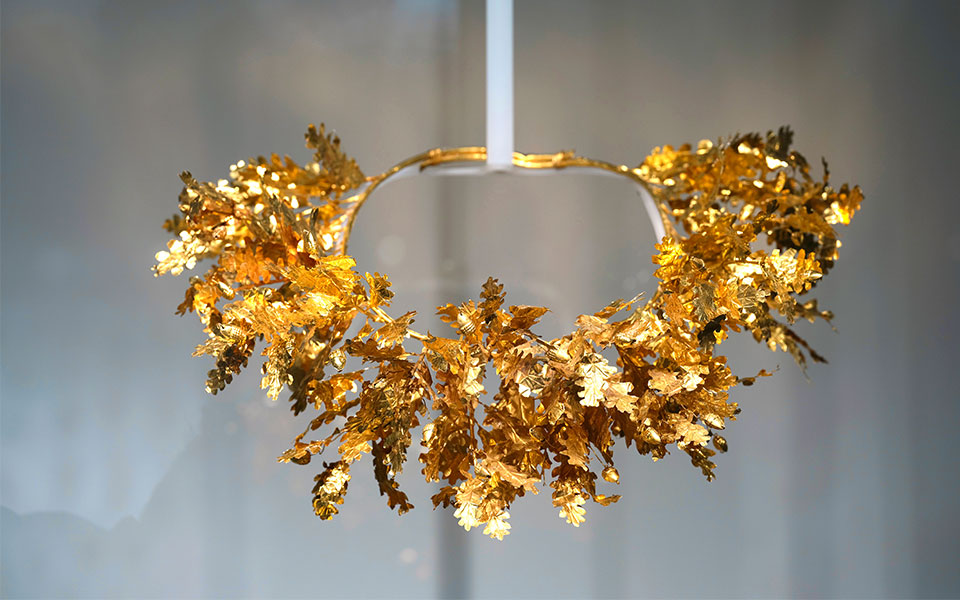
A Macedonian golden wreath found in a royal tomb on display at the new museum. [Stratos Kalafatis]
In with the old, in with the new!
Since 1997, the Museum of the Royal Tombs of Aigai has been Vergina’s main attraction. Now, with Kottaridi’s tireless leadership, a vast archaeological park has taken shape, encompassing not only the original museum but the entire Aigai site that underlies and surrounds the community. Serving as an introductory gateway to this complex historical area, the PMA allows visitors to trace cultural routes through its displays based on the actual urban layout of the ancient capital. With four main exhibitions – one temporary, three permanent – occupying 7,000 sq m of new display space in a series of semi-roofed courtyards and internal galleries, the new museum highlights Aigai’s main royal, sacred, public, domestic, defensive, and funerary remains, including the re-excavated palace; the small adjacent theater; the Great Mound with its current exhibition of royal tombs; and Aigai’s necropolis with its distinct group of earliest Temenid tombs. Kottaridi notes, “We have chosen a rather unusual archaeological approach employing conceptual elements and decidedly abstract aesthetics.”
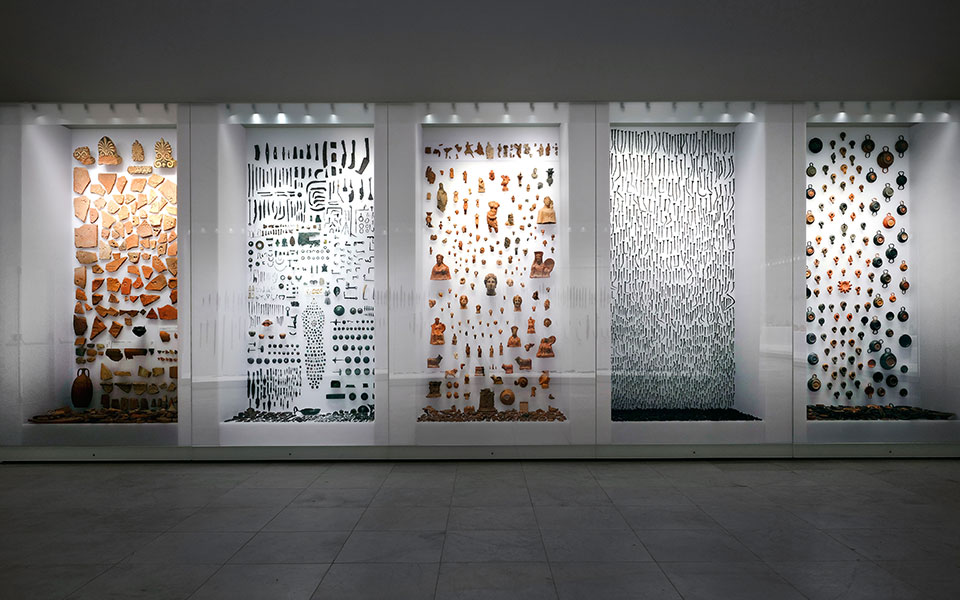
Artefacts on display at the new museum. [Stratos Kalafatis]
Windows into past life
The first temporary exhibition, “Oikoumenis Antidoron” (Return-gifts of the Hellenistic World), showcases a diverse assemblage of Hellenistic coins on loan from collector Theodoros Aravanis, which point to the significant cultural and economic roles played by the various Hellenistic dynasties, monarchs and other leaders and citizens of the Oikoumene who interacted, traded and continued to follow the all-embracing vision of Alexander. Two audio-visual presentations concerning the Hellenistic world projected at the museum entrance give a taste of more treats when the new digital museum opens next year.
Although long in coming, the PMA’s inauguration marks the second time in less than three decades that a world-class museum has been opened for the public at Aigai. Moving through the Polycentric Museum’s permanent exhibitions, we find impressive reconstructions of the palace’s facades and another atrium filled with sculpture, inscriptions, and votive offerings.
The fourth and most extensive new exhibition presents a broad array of thematically arranged artifacts that give a window into ancient Aigai’s daily life, banqueting rituals, and funerary practices. Displayed are household pottery, tools, door keys, and soldiers’ weapons, including the innovative Macedonian sarissa (long spear). Here too, are ladies’ personal items: jewelry, perfume containers, buckles, hair forks, and evidence for gold-decorated garments. Also evocative of Aigai’s human population are remnants of hand-written graffiti and clay impressions of fingers and feet. Together, these two institutions permit a more balanced view of the royals, nobles, heroic warriors, and ordinary people who once inhabited or were laid to rest at Aigai.
This article first appeared in Greece Is (www.greece-is.com), a Kathimerini publishing initiative.
